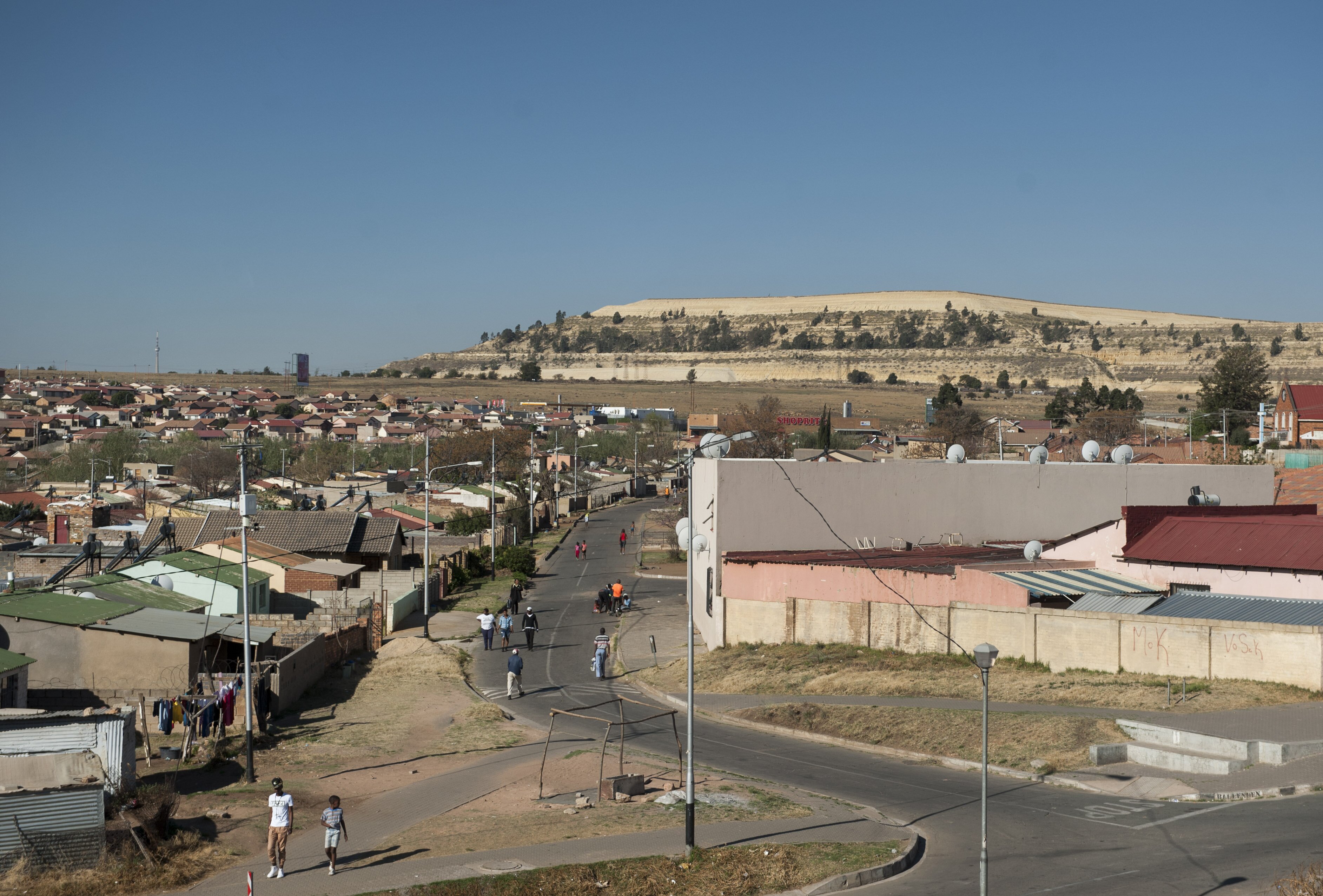
Maxine Kelly Joubert
Wits University
Mounds of yellow sand rise up along the road between Johannesburg and Soweto, haphazardly continuing as far as the eye can see. They loom over the horizon like a mountain range. But instead of pointed tops and jagged lines, they are flat, with the wind picking up the loose sand and spreading it throughout the city. This sand, which is very fine and light, contains toxic chemicals and can travel for hundreds of kilometres.
The mounds, known as mine dumps, are a risk to the environment and inhabitants of Gauteng. Not only is the air-borne dust a health hazard, but these mine dumps are among the largest sources of uncontrolled water contamination.
When rain falls, the water seeps through these mine dumps, reacting with the chemicals in them to form a lethal cocktail. This toxic water, commonly known as acid mine drainage, can be more acidic than vinegar. It also includes many poisonous heavy metals, such as copper and zinc.
This dangerous liquid filters down into our groundwater, soil and surface water sources, polluting everything it touches. It travels down and outwards from the mine dumps – like milk spilled on a sofa. Its corruption can taint soil and water sometimes as far as hundreds of kilometres away.
Enter plants, a natural and sustainable solution to centuries of contamination. This concept – known as phytoremediation, which comes from the Greek word phyton for plant and remedium meaning to treat – has been around for about two decades, but is beginning to gain traction because we need greener, more sustainable solutions for rehabilitation. Another bonus of phytoremediation technologies is that they are generally cheaper than other rehabilitation methods.
With their deep penetrating roots and large biomass, trees can help to rehabilitate these toxic environments. The sylvan saviours clean up contaminants in a number of ways: unlike small plants and shrubs, trees can stop the spread of polluted water. They are able to suck up large quantities of water –and the harmful pollutants along with it. Their roots can consume certain chemicals and quarantine them in parts of the plant, in a process called extraction. In these quarantined areas, the pollutants can sometimes be broken down into less harmful forms. They can also be trapped into these areas, or stabilised, so that they cannot spread. The tree can also remove toxins from water or soil completely by evaporation.
Various trees are able to perform a medley of these tasks. While some trees may only store certain contaminants, other trees may also break them down into less harmful forms. Some deploy more than one remediation strategy at a time. This means that trees can clean up toxic environments in more than one way, which is important because not all mine dump sites contain the same amount of or similar contaminants.
This means that different sites need different strategies – and thus different trees.
One tree currently being researched in South Africa is Searsia lancea, otherwise known as the Karee tree. This evergreen tree, with its multiple stems and small yellow flowers, is a common sight in the Highveld goldmine areas. It also appears to tolerate a wide variety of mining sites.
An indigenous tree, which is frost hardy and drought resistant, it has been used in the Mine Woodlands Programme, a collaboration between AngloGold Ashanti South Africa and the University of the Witwatersrand.
The programme, which began in 1996 and has received in excess of R14-million from various corporate and government sources, aims to prevent pollution at its source, as well as decontaminate and rehabilitate polluted soil and ground water. The Karee tree is only one of the trees planted, out of a few hundred indigenous and 12 exotic tree species, to test how well different species are able to prevent water-borne pollution and dust emissions.
But we need to understand which trees work best for which mine scenario.
Trees tend to store the contaminants they get from polluted water or soil in their leaves, stem, bark and roots. They may also trap certain contaminants in particular places, such as the roots, or in more than one place, such as the roots and the stem. By analysing how much of a chemical is in the roots, compared to the surrounding soil, we can say which tree might be better in a given environment.
Age is also a factor. Some trees start to take up fewer contaminants as they grow older. These trees may need to be harvested or cut off at the stem to encourage them to regrow to remain effective.
But what do we do with the trees that are removed or cut down? Their biomass is now considered waste but wood is a valuable resource to many people. It can be used for building or furniture making, while the leaves of certain trees or plants can be used to make essential oils. This money could then enable researchers to undertake more research in this area. But is it safe?
Extensive research has found that as long as further use of the tree parts does not release the contaminants into the environment somewhere else, the wood can be considered safe. But this means that people cannot burn the wood, as this would release the contaminants into the air. We also have to be careful to fence off these phytoremediation areas so that animals are unable to feed off the plants. (If they did, the toxins could enter the food chain which could be devastating for certain species – including humans.)
It is sometimes possible to extract the contaminants from the waste trees, which can be lucrative if the contaminants are heavy metals, such as nickel. This could also increase the economic value of this rehabilitation process.
There is much need for this sort of research in South Africa as there are many different indigenous plant species and we have not yet discovered their specific cleaning services.

Leave a Reply